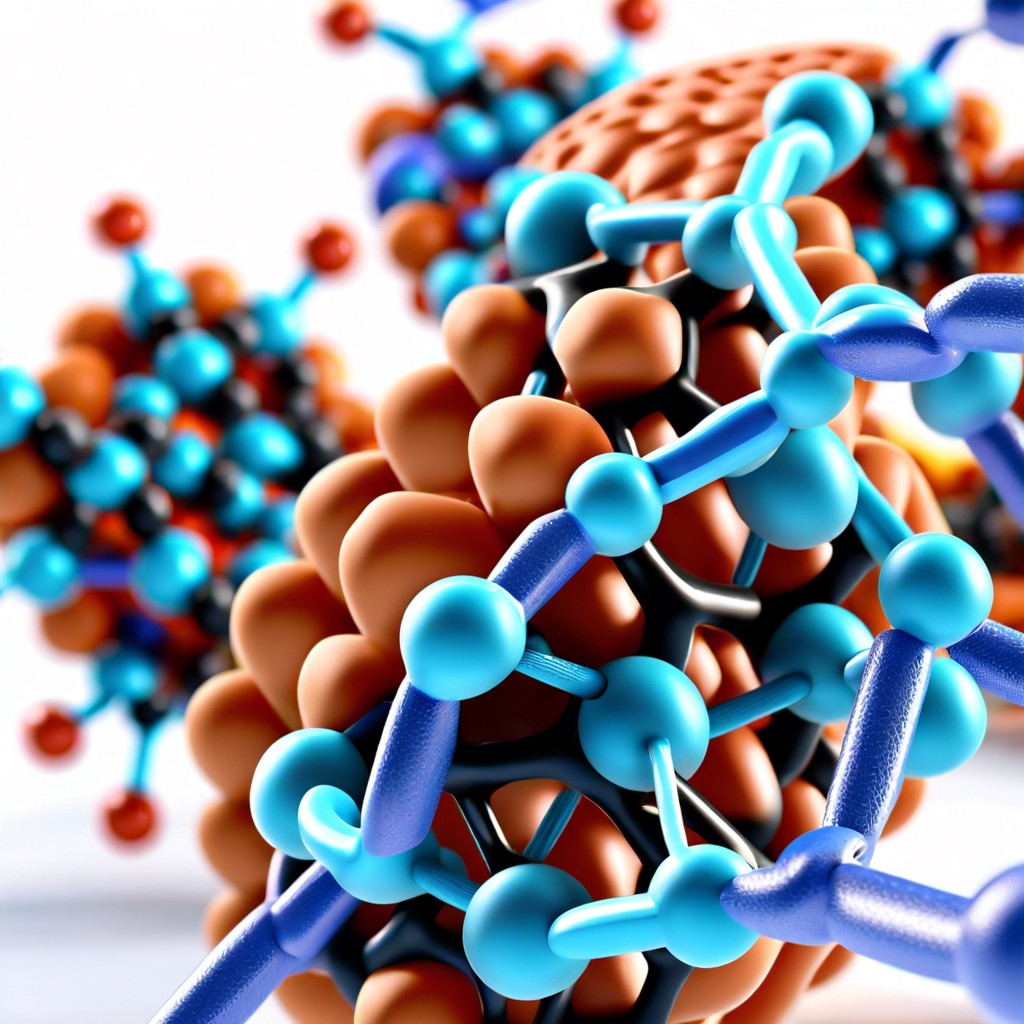In this article, you will learn what a polymer is in chemistry and its basic definition.
Key takeaways:
- Polymers are long chains of repeating monomers.
- Origin of “polymer”: Greek for “many parts.”
- Common examples include PET, rubber, and PVC.
- Two polymerization types: addition and condensation.
- Polymers have diverse properties, like flexibility and strength.
Etymology

The term “polymer” originates from the Greek words “poly,” meaning many, and “meros,” meaning parts. Think of it like a gourmet sandwich made up of many delicious layers. Just like a sandwich, polymers are made up of smaller units called monomers.
- Simplifying it further:
- “Poly” = Many
- “Meros” = Parts (or units)
- Monomers = The individual ingredients of our fancy sandwich
So, a polymer is essentially a long chain of these repeating units. Picture a massive LEGO tower where each brick is a monomer. When you snap them together, you get a grand structure, just like a polymer! This neat naming convention helps scientists sound smart while discussing their very long chemical molecules.
Common Examples
Think of it this way: polymers are everywhere. And I mean *everywhere*. Look around your room—chances are, you’re within arm’s reach of at least five different polymers right now.
Consider plastic bottles. They’re made from polyethylene terephthalate, or PET, a polymer that’s not just handy but also recyclable. It’s the superhero of the recycling bin.
Rubber bands? You guessed it—polymers again. Specifically, natural rubber, primarily polyisoprene. It’s so stretchy; it’s practically the yoga master of the polymer world.
Now, check your wardrobe. Polyester? Yep, another polymer. It’s made from long chains of molecules called esters. Comfortable, durable, and nearly impossible to wrinkle. What’s not to love?
Let’s not forget about Teflon, which makes our cooking pans non-stick. Scientifically known as polytetrafluoroethylene (try saying that three times fast), it’s as slippery as a politician avoiding tough questions.
Then there’s our trusty friend, PVC. It’s in pipes, window frames, and even credit cards. Polyvinyl chloride’s versatility makes it the Swiss Army knife of the construction world.
Even the screen you’re reading this on? Polymers are in the form of polycarbonate, making it tough and transparent, perfect for gadgets.
Polymer power. It’s kind of a big deal.
Synthesis
Let’s dive into how these extraordinary materials come to life. Polymers are built through a process called polymerization. Think of it like connecting Lego blocks to make something super cool.
There are two main types of polymerization: addition (or chain-growth) and condensation (or step-growth).
In addition polymerization, monomers link together without kicking out any atoms. Picture a conga line at a party, with each dancer just grabbing the one in front and holding on tight.
Condensation polymerization, on the other hand, involves monomers joining and expelling small molecules like water. It’s like a buddy system where every handshake results in someone dropping their soda.
Catalysts often speed up these reactions. They’re the caffeine in our coffee, giving everything a boost.
Finally, the reaction conditions like temperature and pressure can influence the end product. Just like your cookies, polymers can turn out differently whether you bake them slowly or crank up the heat.
Structure
Imagine a long chain of paperclips linked together. Polymers are similar but way coolers. They consist of repeating units called monomers. These monomers connect in various ways, forming different patterns.
- Linear: Think straight spaghetti noodles. Monomers join end-to-end.
- Branched: Imagine a tree. Some monomers sprout side chains.
- Cross-linked: Like a net. Chains link at multiple points, creating a mesh.
These structures impact properties. Linear polymers can be flexible, branched ones can be gooey, and cross-linked polymers are often tough and durable.
Size matters too. Long chains mean stronger materials. The setup of these chains and branches decide how polymers behave.
Properties
Think of polymers as the Swiss Army knives of the material world. Their properties are as diverse as a kid’s interests. Here are a few key ones to tickle your curiosity.
First off, polymers are often lightweight. Imagine carrying a plastic water bottle instead of a steel flask while hiking. Your back will thank you!
They can be incredibly strong, too. Kevlar, used in bulletproof vests, is a polymer. So, you can thank chemistry for that added layer of superhero protection.
Polymers can also be flexible or rigid. Rubber bands and PVC pipes; both are polymers, but one snaps while the other bends. All in the same family!
Here’s a fun one: they can be resistant to chemicals. So next time your milk jug stands up to that accidental splash of cleaning bleach, you know why.
Some polymers are great insulators. That means they can keep things hot or cold, like your favorite thermal mug does.
Lastly, many are recyclable. They can get a second life as a park bench or a funky fleece jacket. Polymers love a good makeover!
These are just a few examples, but they showcase how versatile and handy these materials can be in everyday life.
Recap




